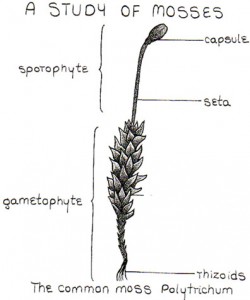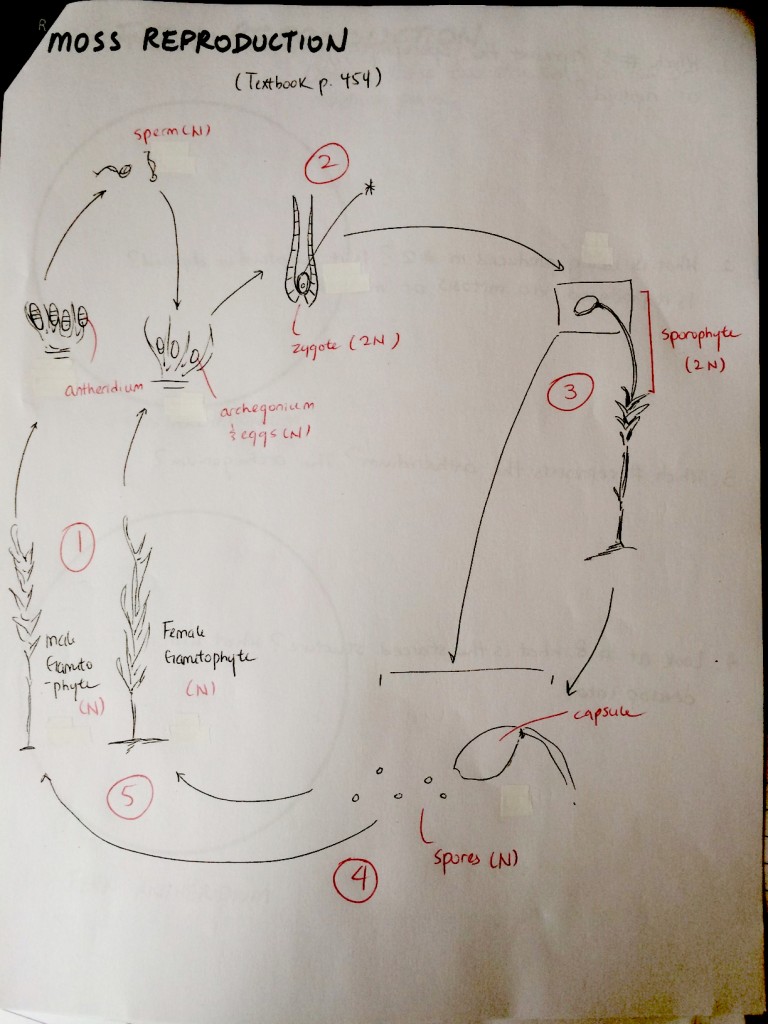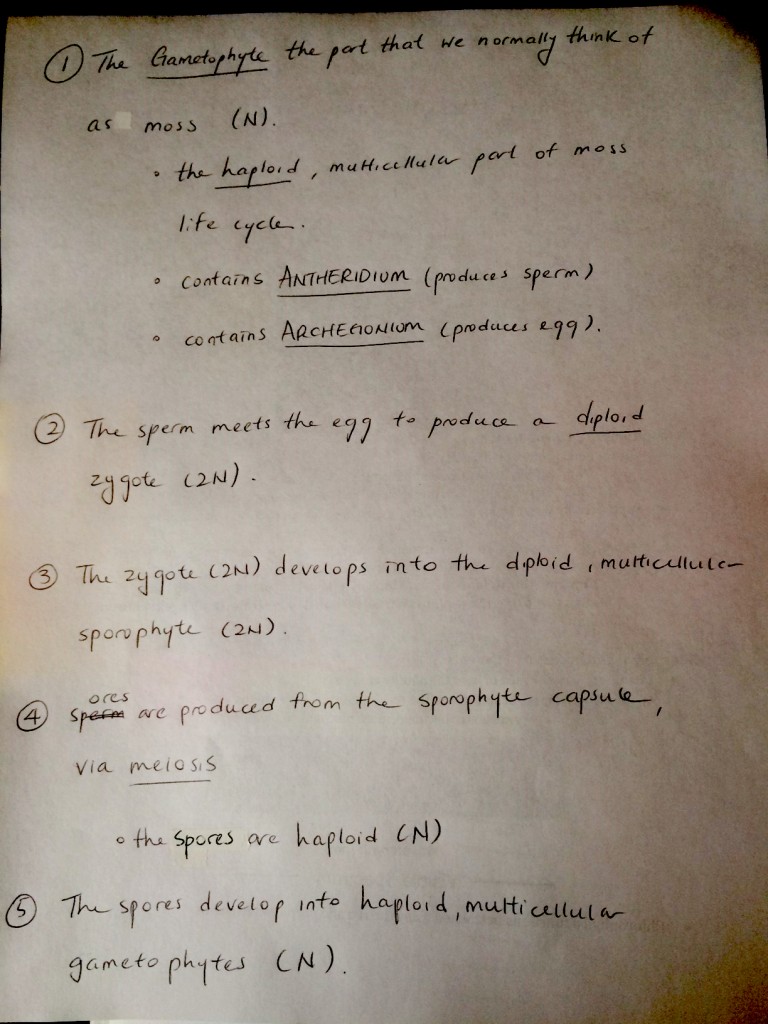Block A (Cassidy, Lexus, Allison, Ana and Logan)
Presentation: Moss (Block A)
Moss Review Sheet- Biology 11 (1)
Block C (Dylan, Kyle, Nathan, Jake, and Ryan)
Presentation: block c Moss project
Mosses (Summary)
Bryophyta (including mosses, hornworts and liverworts) are a group of primitive plants that probably resembled the first plants to colonize the land. However, they are not considered land plants, since they are still highly dependent on water to thrive. Here, we will focus on the mosses.
Structure and Function
Mosses, like the algae from which they evolved, display alternation of generations. This means that in one complete life cycle, it has a diploid, multicellular generation (sporophyte) and a haploid, multicellular generation (gametophyte).
They are adapted to moist environments with plentiful rainfall at least part of the year. Therefore, mosses…
- Have no vascular tissue
- No leaf, root or stem, since it has no vascular tissue
- It has rhizoids, which are “root-like” structures that do not suck up nutrients or water, but anchor the plant to the surface it is on
- No cuticle
- Flagellated sperm cells that swim through water to fertilize eggs
- The green part of the plant that we really think of as moss is the gametophyte. And like all gametophytes…
- It is haploid (N)
- It produces gametes: eggs (in the archegonium) and sperm (in the antheridium)
- If you look closely at mosses, you may see a small stalk with a capsule on the end sticking out of the green mass. That is the sporophyte.
- It is diploid (2N)
- It is produced from the fusion of egg ans sperm
- It produces spores via meiosis
- Therefore, the spores that are produced are haploid (N)



